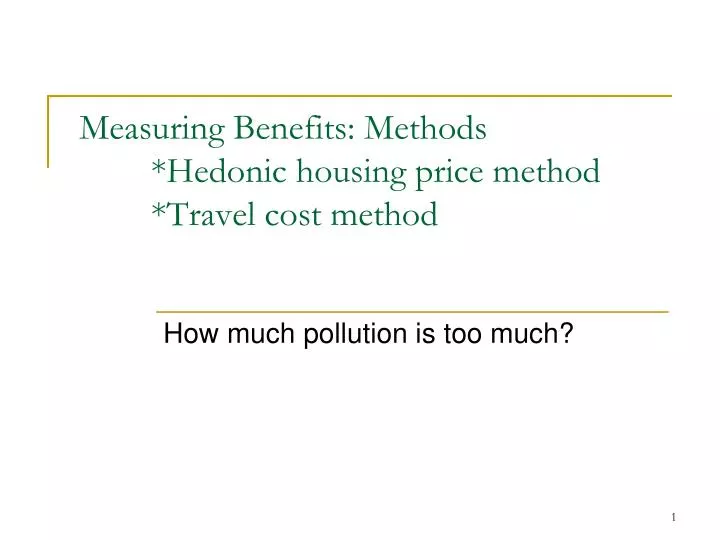

It is most commonly used to indicate fluctuations in housing prices due to local environmental conditions. It is acknowledged that this glossary uses descriptions of the OECD glossary of statistical terms, the Glossary of the System of National Accounts 1993 and the UN classifications registry. Hedonic pricing is a method for determining ecosystem or environmental service economic values that directly impact market prices. The hedonic method is a regression technique used to estimate the prices of qualities or models that are not available on the market in particular periods, but whose prices in those periods are needed in order to be able to construct price relatives it is based on the hypothesis that the prices of different models on sale on the market at the same time are functions of certain measurable characteristics such as size, weight, power, speed, etc and so regression methods can be used to estimate by how much the price varies in relation to each of the characteristics. posed method is identified even in a single-market setting, given a flexible representation of the hedonic price function and a parametric representation of. So, we can say that the hedonic method is a method of adjusting the CPI to account for changes in the products that make up the market. In simple terms, the market value is determined based on the recent sale values of.

Glossary of the 1993 SNA - Definition of Term By doing so, the hedonic method makes the CPI more accurate. With the hedonic method, the property does not have to be viewed. Key Words: Price Index, Quality Change, Hedonic Regression. Summary of the Hedonic Pricing Method: The hedonic pricing method is used to estimate the value of environmental amenities that affect prices of marketed goods. Resources Technical cooperation Publications this context and briefly looks at an alternative hedonic method that does satisfy monotonicity.


 0 kommentar(er)
0 kommentar(er)
